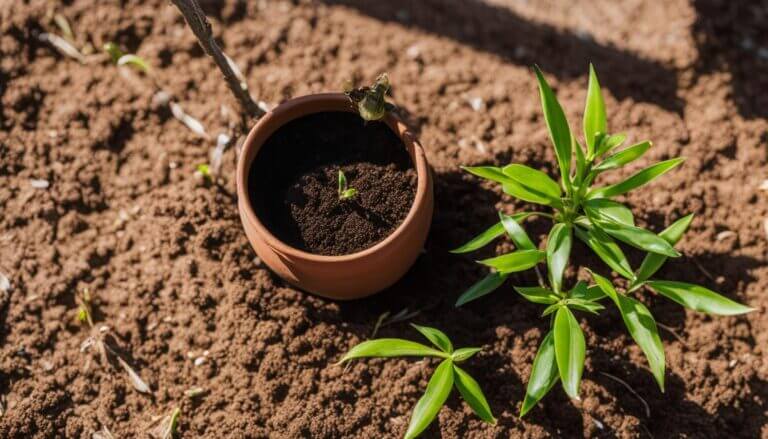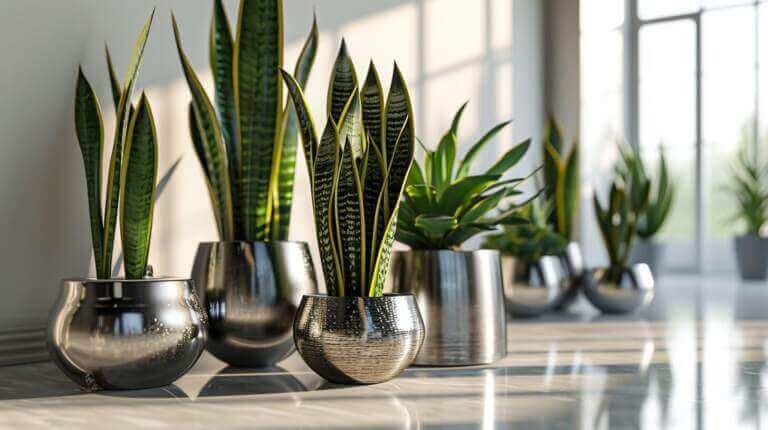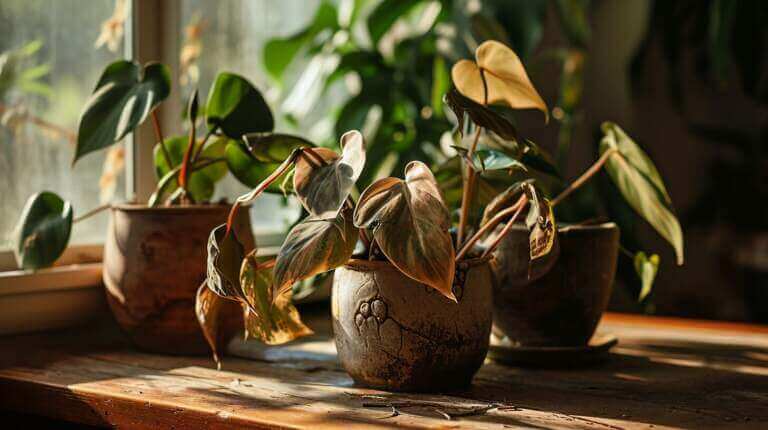Have you ever noticed the graceful leaves of your Chinese Evergreen plant curling up like a timid dancer?
Just like a delicate ballet performance, these leaves can express the plant’s needs and desires. However, understanding the underlying causes behind this phenomenon is crucial to ensure the health and vitality of your beloved plant.
In this article, we will explore the various factors that may lead to leaf curling in Chinese Evergreens and provide practical solutions to help you serve your plant’s needs effectively.
Key Takeaways
- Overwatering and underwatering can both cause curling of Chinese Evergreen leaves, so it is important to strike a balance in watering.
- Low humidity levels can lead to curling and drying of leaves, so it is important to maintain adequate humidity.
- Insufficient sunlight can cause stress and curling of Chinese Evergreen leaves, so it is important to provide the plant with indirect, bright light.
- Pest infestations and nutrient deficiencies can also contribute to curling of Chinese Evergreen leaves, so regular monitoring and addressing these issues is important for the health of the plant.
Cause of Chinese Evergreen Leaves – Overwatering and Underwatering
One of the main causes for the curling of Chinese Evergreen leaves is improper watering, which can be attributed to either overwatering or underwatering.
Overwatering, or providing excessive water to the plant, can have detrimental consequences. It can lead to root rot, as the roots become waterlogged and are unable to absorb oxygen properly. This can result in the wilting of leaves, yellowing, and ultimately, the curling of the leaves.
On the other hand, underwatering, or not providing enough water to the plant, can also cause leaf curling. Signs of underwatering include dry soil, shriveled leaves, and brown leaf edges.
It is important to strike a balance between the two watering extremes to ensure the health and vitality of Chinese Evergreen plants.
Chinese Evergreen Leaves Curl – Low Humidity Levels
Maintaining adequate humidity levels is essential in preventing the curling of Chinese Evergreen leaves. Low humidity can cause the leaves to lose moisture, leading to curling and drying out.
To increase humidity levels and prevent leaf curling, consider the following tips:
- Place a humidifier near the plant to add moisture to the air.
- Group your Chinese Evergreen with other houseplants to create a microclimate with higher humidity.
- Mist the leaves regularly with water to provide them with additional moisture.
By implementing these measures, you can create a more suitable environment for your Chinese Evergreen, ensuring that the leaves remain healthy and vibrant.
Aglaonema Leaves Curling – Inadequate Lighting
Due to the lack of sufficient lighting, Chinese Evergreen leaves may curl and exhibit signs of stress. Improper positioning of the plant, such as placing it in a dark corner or far from windows, can result in insufficient sunlight reaching the leaves. Chinese Evergreen plants require indirect, bright light to thrive. When they do not receive enough light, the leaves may start to curl or droop. Additionally, the color of the leaves may fade or turn yellow.
To address this issue, it is important to ensure that the Chinese Evergreen is placed in a well-lit area, near a window preferably, where it can receive the required amount of sunlight. Rotating the plant every few weeks can also help ensure that all sides of the plant receive equal exposure to light.
Chinese Evergreen Leaves To Curl – Pest Infestations
Pest infestations can cause the leaves of Chinese Evergreen plants to curl and exhibit signs of damage. It is important to identify and address these infestations promptly to prevent further harm to the plant.
Here are some key points to consider regarding pest control for Chinese Evergreen plants:
- Integrated pest management: This approach involves using a combination of techniques to manage pests, including cultural, biological, and chemical methods. It focuses on minimizing the use of pesticides and promoting natural pest control.
- Natural remedies for pest control: Some effective natural remedies for controlling pests on Chinese Evergreen plants include neem oil, insecticidal soap, and diluted vinegar solutions. These remedies can be sprayed on the leaves and stems to deter pests and minimize damage.
- Regular monitoring and inspection: It is crucial to regularly inspect your Chinese Evergreen plant for any signs of pests. Look for visible insects, webbing, or discoloration on the leaves. Early detection can help prevent severe infestations and minimize damage to the plant.
Cause of Leaf Curling – Nutrient Deficiencies
Interestingly, nutrient deficiencies can be a contributing factor to the curling of leaves in Chinese Evergreen plants. When a Chinese Evergreen plant lacks essential nutrients, it may exhibit common symptoms such as leaf discoloration and curling.
One of the most common nutrient deficiencies seen in Chinese Evergreen plants is a lack of nitrogen. Nitrogen is essential for the production of chlorophyll, the pigment responsible for the green color in leaves. Without sufficient nitrogen, the leaves may turn pale or yellowish, and eventually curl.
Another common nutrient deficiency is a lack of iron. Iron is necessary for the production of enzymes involved in chlorophyll synthesis. Without enough iron, the leaves may develop interveinal chlorosis, where the veins remain green while the areas between them turn yellow. This can lead to leaf curling as well.
To address nutrient deficiencies, it is important to provide the plant with a balanced fertilizer that contains the necessary nutrients. Regularly monitoring the plant’s nutrient levels and adjusting the fertilizer accordingly can help prevent leaf curling caused by nutrient deficiencies.
Frequently Asked Questions
How Often Should I Water My Chinese Evergreen Plant(aglaonema)?
The watering frequency of Chinese Evergreen plants is an important aspect of their care. Overwatering can lead to numerous problems, including leaf curling. Signs of overwatering include yellowing leaves, root rot, and wilting. To determine the ideal watering schedule, factors such as the plant’s size, pot size, and environment should be considered. It is crucial to strike a balance between providing enough water to keep the plant hydrated while avoiding excessive moisture that can lead to leaf curling.
Can I Mist My Chinese Evergreen Leaves to Increase Humidity Levels?
Misting Chinese evergreen leaves can be beneficial in increasing humidity levels. The fine mist helps to create a moist environment, which is ideal for these plants.
However, there are alternative methods to increase humidity, such as using a humidifier or placing the plant on a tray of water-filled pebbles. These methods ensure consistent and controlled humidity levels, without the risk of over-watering or causing leaf curling.
It is important to consider the specific needs of the plant and choose the most suitable method.
How Much Light Does a Chinese Evergreen Plant Need?
Understanding the light requirements for Chinese evergreen plants is essential for their care. These plants thrive in moderate to low light conditions, making them suitable for indoor environments with indirect sunlight. They can tolerate some shade but should be placed near a window for optimal light exposure.
Avoid placing them in direct sunlight, as this can cause leaf scorching. By optimizing the light conditions, you can ensure the health and well-being of your Chinese evergreen plant.
Are Curling Leaves a Common Symptom of Chinese Evergreen Plant Issues?
Chinese evergreen plants are susceptible to various common pests that can infest and damage their leaves. These pests include spider mites, mealybugs, scale insects, and aphids.
These pests can be controlled using several methods. One of the methods is regularly inspecting the plants for signs of infestation. By regularly checking the plants, gardeners can identify any pest problems early on and take appropriate action.
Another method is using insecticidal soap or neem oil sprays. These products are effective in controlling pests and are safe to use on Chinese evergreen plants. Gardeners can spray the leaves with the soap or oil solution, ensuring that all surfaces are covered. This will help kill and repel the pests.
Additionally, manually removing the pests can also be an effective control method. Gardeners can use their fingers or a soft cloth to gently wipe away the pests from the leaves. This should be done carefully to avoid damaging the plant.
By implementing these control methods, gardeners can effectively manage and prevent pest infestations in Chinese evergreen plants.
What Are the Signs of Nutrient Deficiencies in Chinese Evergreen Plants?
Nutrient deficiencies in Chinese Evergreen plants can lead to various signs that indicate a lack of essential elements. These signs may include yellowing or browning of leaves, stunted growth, and overall poor plant health.
To address these deficiencies, it is crucial to properly fertilize Chinese Evergreen plants. This involves using a balanced fertilizer specifically formulated for houseplants and following the recommended application rates.
Regularly monitoring the plant’s growth and adjusting the fertilization schedule accordingly can help maintain optimal nutrient levels and promote healthy foliage.







